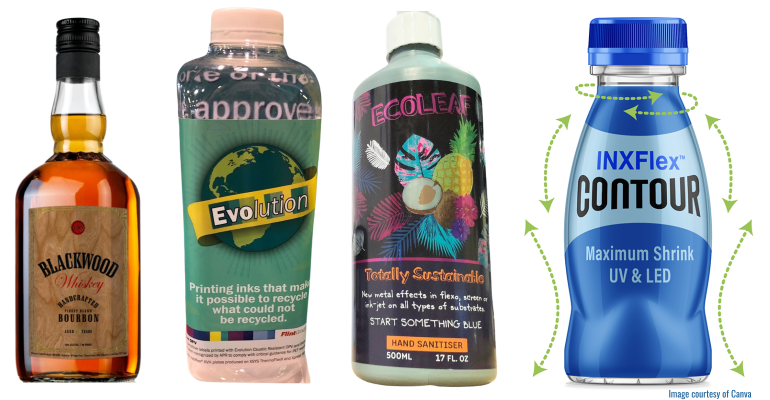Eco-labels provide minimal requirements for the environment and human health and attest to the conformity of the items. They are intended to let customers, companies, and producers know which items are the most ecologically friendly. Despite being optional, they are quickly elevating to a crucial global competitive component. Eco labels safeguard customers against questionable environmental claims, commonly known as “greenwashing,” as they are certified by very stringent standards.
A sustainability label focuses on qualities including ethical raw material procurement, a product’s carbon footprint, compostability, recyclability, and other factors that are applicable.
The primary driver of innovation in labels is sustainability. This is evident when looking at the much broader packaging market.
The Labelexpo Americas, which took place in mid-September, showcased labels and other products that are also focused on sustainability. New products included inks, recycled-content label films, and substrates designed to improve rigid container recycling.
The upgrades are beneficial for the environment but do not take away from the labels’ goal to engage and inform consumers.
The following article discusses four breakthroughs in the area of sustainable decoration. These include wood labels, low-carbon metallized decoration, and two more.
Smaller labels
The Association of Plastic Recyclers (APR) has recognized OptiFlex Thin ecoFocus smaller pressure-sensitive labels from Flexcon for facilitating the recycling of rigid PET and high-density polyethylene (HDPE) containers.
Product manager Melissa David claims that in addition to using 24% less plastic, there are also 24% more labels on each roll. For the operations of brands, this implies fewer downtime and more production.
For usage with PET containers, there are three biaxially orientated polypropylene (BOPP) variants available, and there are two PE film alternatives for HDPE containers.
Evolution inks
It is surprising how important inks and labels are for facilitating recycling.
Two ground-breaking methods for two widely used types of labels—one for pressure-sensitive goods and the other for shrink-sleeve labels—that maximize rigid container recycling were highlighted by Flint Group/Narrow Web.
Caustic-Resistant Over-Print for Evolution The pressure-sensitive label is printed and then varnished. By shielding the ink, the varnish prevents bleeding during the caustic wash.
The pressure-sensitive label flakes neatly detach from the package in the caustic “float-sink” water after the bottle and label have been crushed down. The uncontaminated PET flake is left in the recycling stream while the label material holding the protected ink floats to the top and may be skimmed off to a different waste system.
The Evolution Deinking Primer for PET shrink sleeves, which sits between the ink and the sleeve and has been authorized by the Association of Plastic Recyclers (APR), was the second significant advancement. Ink and primer rise to the top of the caustic wash and are eliminated because the primer allows the ink to wash from the sleeve during recycling.
The sleeve stays with the bottle in the recycling process as opposed to being disposed of in a landfill.
Paulo Vieira, technical director, worldwide key accounts, explains that this translates to an increase in plastic recycling of between three and six percent. The Evolution technologies, which Vieira oversaw the development of, are characterized by him as “simple and sustainable solutions that are seamless for clients.”
The Environmental Sustainability Award at Labelexpo America went to Evolution Deinking Primer. It “makes a significant contribution to achieving a circular lifespan for label materials,” according to the judges.
According to Vieira, the two complementing solutions were created over the course of eight months, with the over-print varnish turning out to be the more well-liked option.
Wood labels
One of the most environmentally friendly alternatives was discovered at the Wausua Coated Products booth, which offered a distinctive assortment of wood veneer facestock that was cut directly from trees and is now offered in cherry and birch.
The [labels] have the feel and grain of wood, and the surface is smooth enough for printing and converting, according to business development coordinator Erika Gunter. The wood’s inherent differences make it ideal for label applications needing a distinctive appearance.
She mentions that the labels were created for application to glass bottles in the wine, beer, spirits, and specialty markets and were produced on an HP Indigo digital printer.
According to Gunter, “These markets have shown to be COVID-resistant, with demand for these in-demand sustainable brands through the roof.”
The product lineup will shortly include an oak variant. On a 1.2-mil clear PET film liner with a specialized pressure-sensitive adhesive, the wood veener products are offered.
The firm also offers twill and a 60# sugarcane (bagasse) paper that comes with a transparent PET (rPET) lining that is 90% recycled.
Ecoleaf metallization
What steps may be taken to increase the sustainability of attention-grabbing substrate metallization?
Redesign the procedure is what Actega did before launching the ground-breaking Ecoleaf in Europe last year.
The “liquid foil” that Ecoleaf utilizes is spot-applied to the designated target regions using one of three printing techniques: screen, flexographic, or inkjet. It is made of metallized flakes.
The plastic-free method promises to have a 50% lower carbon footprint than cold- or hot-foil stamping and does away with the requirement for foil.
It is asserted that the gold flake is more shiny than gold foil.
Additionally, the business claims that 3,000 kilograms (6,614 pounds) of foil may be replaced by 2.2 pounds (1 kg) of Ecoleaf flakes.
And there is a lot of interest in it.
“We currently have six beta machines installed and functioning in the field, with the figures predicted at approximately 20 by the end of this year,” Actega Metal Print general manager Stephan Plenz stated in February.
The company’s Actega Metal Print business would make the technology accessible in the US the following year, as was revealed to us during the exhibition.

Leave a comment